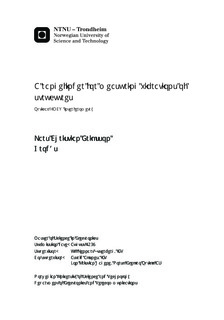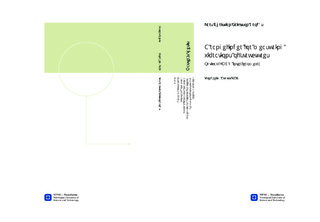| dc.description.abstract | The optical Frequency Modulated Continuous Wave (FMCW) technique along with utilizing the Doppler shift was investigated for the application of monitoring distance to and oscillation of a bridge. The equipment was borrowed from Norsk Elektro Optikk AS ( NEO). The importance of coherence length and linearity of scan when a laser is tuned was encountered, both presenting a challenge to achieving a high signal to noise (SNR) level. Two lasers were tested in the optical FMCW setup, with coherence length of 15 m and 150 m, respectively. The laser with the shortest coherence length only had a detectable signal to a distance of less than 3 m. With the other laser measurements up to 15 m were done, and a signal was detected up to 20 m. The suitability of the system for detecting vibrations was tested by mounting a retroreflector on a large speaker, and oscillating this at low frequencies, comparable to typical vibration of bridges(a few Hz, with amplitude of mm-cm). The Doppler shift induced by a velocity of 0.01 m/s was approximately 13 kHz. As an example, this makes it possible to measure bridge oscillations with a frequency 4 Hz, with a peak to peak displacement of 0.1 mm, when presuming a sinusoidal movement of the bridge. The resolution of the absolute distance is calculated to be 2 cm for this setup if the detection of a change in the beat frequency of 1.58 kHz is possible. The modulation frequency of 300 Hz enables rapid sampling which poses no limit to measure oscillations of structures up to 10 Hz.
The system proposed still needs some work: linearise the wavelength scan of the laser, change the detector to one with a much higher bandwidth and create a signal processing back end to calculate the distance and amplitude/frequency from the signal. Other optical components, such as the lenses, retroreflectors and the beamsplitter, need to be replaced with ones that are optimized for the wavelength of the laser.
Systemet som er foreslått her trenger videre arbeid: linearises bølgelengdeskannet til laseren, erstatte detektoren med en med større båndbredde og lage en signalbehandlings back-end for å beregne avstanden og hastigheten/vibrasjonen ut fra signalet. De resterende optiske komponentene, som linsene, retroreflektorene og beamsplitteren, bør også byttes med komponenter som er optimalisert for bølgelengden til laseren. | |

